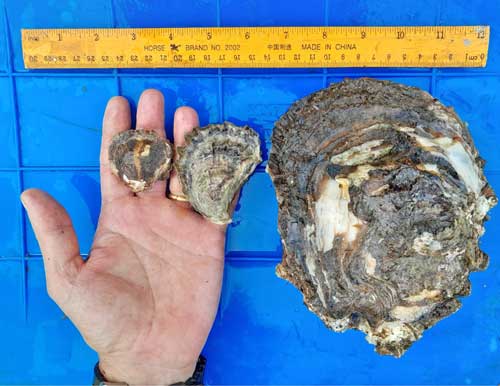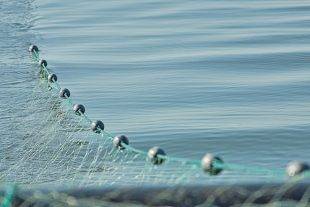An introduced marine pest, the Suminoe oyster (Magallana ariakensis), has been detected at Bribie Island and several locations across Brisbane — Boggy Creek, Pinkenba, (near the mouth of the Brisbane River) and Kedron Brook. It was first reported in 2023 and before that it had not been detected in Australia.
The Suminoe oyster is a fast growing, large rock oyster belonging to the Ostreidae family of salt-water bivalve molluscs. It competes with native species for space and may carry exotic diseases and parasites. It can grow attached to submerged and floating infrastructure including pylons, pontoons and boats and can occupy shallow waters, as well as muddy creeks of warm estuaries.
The Queensland Oyster Growers Association is working with Biosecurity Queensland in response to this detection to minimise any potential impacts to industry and the environment. The presence of Suminoe oyster does not impact the quality of commercial oysters grown in the Moreton Bay.

What to look for?
Suminoe oysters are large and flat in appearance and the shell can grow to up to 240 mm long. It can be grey and yellowish, or brown and purple. The inner surface is smooth and greyish-white, with purple on the edges.
Suminoe oysters are difficult to identify in the field from other species of native rock oysters, until they grow to a size larger than other species.
What you can do to assist
Queensland fishing, boating and recreational water-goers should be on alert and report suspected Suminoe Oysters to Biosecurity Queensland.
Any person who owns a boat or recreational watercraft should check, clean and dry equipment to minimise the biosecurity risk of transferring this invasive species to new areas:
- Check wheel arches on trailers, boat propellers, fishing tackle and footwear for river mud and debris
- Keep your boats, trailers, wetsuits, fishing rods and equipment clean
- Allow your boat, trailer, fishing rods and other equipment to dry completely before using at another location.

What to do if you see Suminoe oyster
If you think you have seen Suminoe oyster, report it immediately to Biosecurity Queensland. If possible, take a photo to assist with identification and record the location.
Suminoe oysters are considered biosecurity matter and should not be touched or moved.
Further information can be found via the fact sheet or on the website.
To report Suminoe Oyster, contact Biosecurity Queensland online or by calling 13 25 23.
 Bush ‘n Beach Fishing Magazine Location reports & tips for fishing, boating, camping, kayaking, 4WDing in Queensland and Northern NSW
Bush ‘n Beach Fishing Magazine Location reports & tips for fishing, boating, camping, kayaking, 4WDing in Queensland and Northern NSW









